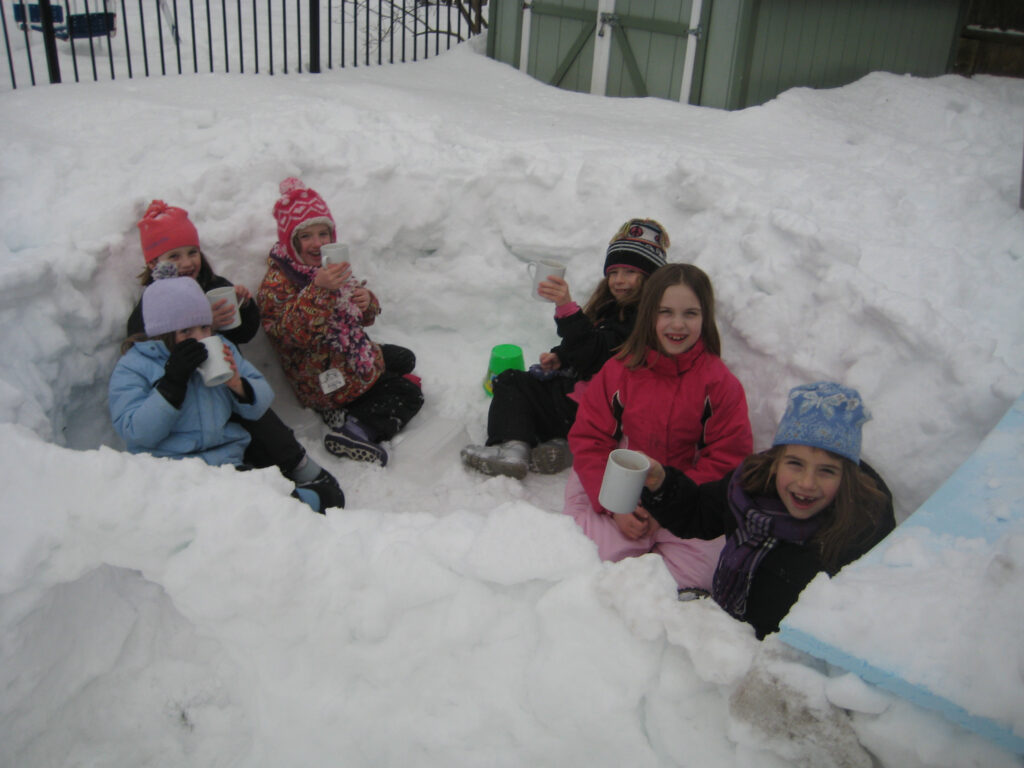February 27, 2023 by Mazie Neville (’24)
It’s early morning. The alarm blares, warning of the school day to come. The heater rumbles obstinately as the cold floor creaks. The smell of winter wafts up the stairs. And the sun shines blindingly on the pristine, freshly fallen snow. The white text on the computer stands out prominently against the blue background “CANCELED.” It happened.
Snow is a magical thing, for children it means sledding, snowball fights, and most appealingly: snow days. Students find any way possible to bring about these magical school-free interludes. They wear their pajamas inside out and backward, stuff their freezers with quarters, and sleep with kitchen utensils. Mckenna Malloy puts “ice cubes on her back porch” while Molly Beauregard “flushes [them] down the toilet.” These traditions may slightly vary across regions and households, but for at least one night, everyone is united in a single wish, a wish for snow.

Well, maybe not everyone. Dr. Patton, the Superintendent in charge of determining snow days, describes it more as a “living nightmare” than an enchanting possibility. No matter what choice he makes he is going to have some unhappy people, people who won’t be afraid to share their indignation.
The problem is that pleasing one group is mutually exclusive to appeasing the other.
Elementary-aged children are unable to stay at home without supervision, and high schoolers with limited driving experience are going to struggle to arrive safely. Beyond that, there is a divide across different regions of the district. Saratoga Springs is one of the largest districts in the area “covering over 100 square miles.” The weather is not going to remain consistent, so while people in the Geyser area may be confused by the call, those up in Greenfield couldn’t have even reached their cars.
Despite the painful logistics of snow, there is still something undeniably magical about it. Some of it is inexplicable, just purely existing as magic should. Some of it is just connotation; according to movies, snow is Christmas, and Christmas is Christmas, obviously. Other aspects do hold some scientific merit. A theory proposed by Arne Lowden, psychology researcher, is that since a snowy ground reflects 95% of the light compared to the 20% reflected by flurry-less ground, we are rendered happier than we are in a typical depressing winter scene. This light is then sent to the brain which utilizes it to “[regulate] our emotions.”
However, this still doesn’t explain what makes snow different from a bright summer day. Most likely? In some peculiar way, snow unlocks the inner child in all of us. Noel Bell, psychotherapist and spokesperson, theorizes that snow gives us the opportunity to “enjoy ourselves in a non-self-conscious way,” the way we used to before consciousness meant insecurity. Nostalgia is a powerful tool and snow exploits it to the fullest extent. Naturally, as humans, we tend to romanticize the past because we fear the future.And so, when even just for a second or for a fleeting day, we can return to the past, we jump at the chance. The race stops. Time is on hold while it snows. We can be kids again. As Irving Berlin wrote, “I’m dreaming of a white Christmas, just like the ones I used to know.”
